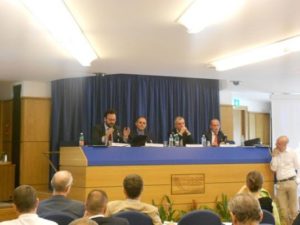Italy: Law 28 lays Foundation for Renewable Heat Feed-in Tariff
May 31, 2011
Italy is among the countries which have declared ambitious targets for the solar heating and cooling sector in its National Renewable Energy Action Plan. The administration made the first step towards reaching those aims by implementing Law Number 28, approved on 3 March (see the attached document in Italian).
The law includes several important items with regard to the solar thermal sector:
Article 8 simplifies the approval of solar thermal systems. It allows home owners who want to buy a solar thermal system to start with the installation after sending a simple “advance notification” to the municipality administration. Since March, this regulation applies to all collector fields that are integrated into the building with the same inclination or orientation as the roof or façade.
Article 11 specifies new regulations for the national renewable obligation, which has so far stipulated that new or refurbished residential buildings are to include a renewable heating installation that meets at least 50 % of the hot water demand. According to the new law, the obligation will become effective in September 2011. Law 28 also shifts requirements from a “domestic hot water only approach” to one meeting the entire heating needs of a building: From 1 January 2012 onwards, new and refurbished buildings must cover both 50 % of their hot water demand as well as 20 % of their heating demand by renewable sources, presenting a new challenge to the solar thermal sector.
Article 28 appears to be the most important one of all, as it provides the basis for a feed-in tariff incentive scheme for small renewable heating systems. There are also plans to publish further requirements and application rules within 6 months after law 28 came into effect. In the long run, the new scheme will most probably replace the now offered tax credits. The associations involved will need to advocate that the tax credits are not stopped before the new subsidy scheme is completely implemented. Law 28 also stipulates a new requirement in order to receive the incentives: From 2013 solar collectors must be Solar Keymark certificated.
On behalf of the Italian solar thermal association Assolterm as well as the Italian heating association Assotermica, consultancy PricewaterhouseCoopers (PwC) surveyed the Italian solar thermal market in 2010. The survey’s aim was not only to analyse current market development, but to also verify the annual collector area installed in recent years.
| Newly installed collector area according to the Assolterm statistics published by ESTIF | New annual statistics from the Pricewaterhouse-Cooper study | Difference between the two statistics in % |
|
| 2006 |
186,000 m2 |
200,000 m2 |
8% |
| 2007 |
330,000 |
350,000 m2 | 6% |
| 2008 |
421,000 |
500,000 m2 |
19% |
| 2009 |
400,000 |
475,000 m2 |
19% |
| 2010 |
n/a |
490,000 m2 |
n/a |
The PwC study shows a significantly higher annual volume, but the same trend (see the table above). The European Solar Thermal Industry Federation (ESTIF) decided to quote the new figures of PcW when it publishes its annual statistics for the European market at the Intersolar Europe. That means Italy has strengthened its position as the second largest solar thermal market in Europe, being now 153,200 m2 ahead of third-ranking Spain.
More information:
http://www.assolterm.it
http://www.assotermica.it


